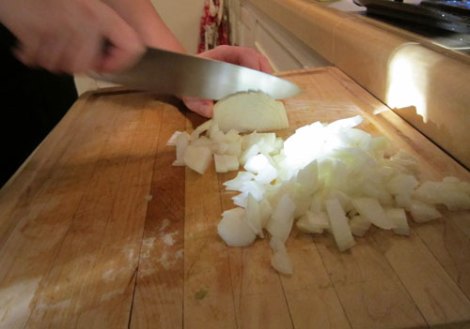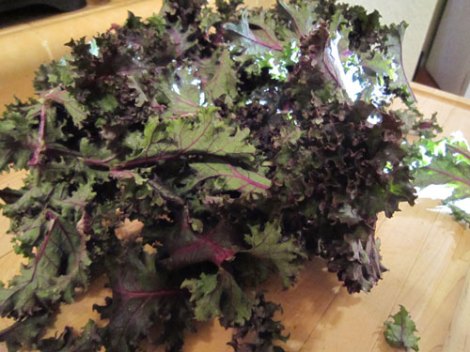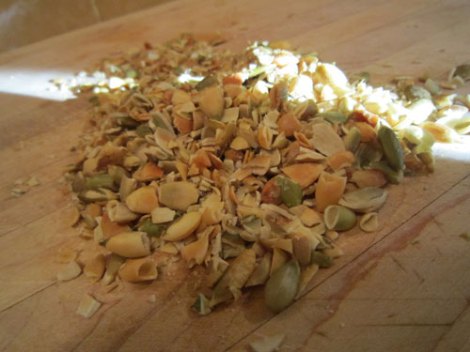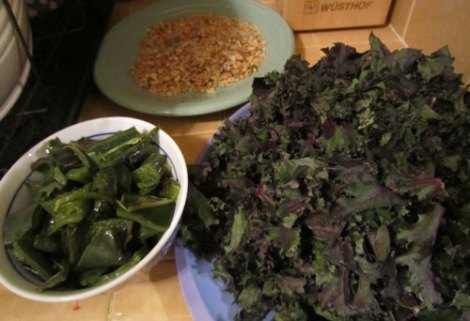We have an extra-special treat today! My dear Mister Principessa has written a lovely guest post about his latest favorite thing to cook, chicken shawarma. — La Principessa
hello there to everyone who was expecting to read something about makeup. i am (name tbd) [his name is Mister Principessa—La Prinicipessa] [him name is name tbd–name tbd] and i am going to write about food instead… more specifically, Chicken Shawarma, which i was inspired to make after eating a really good sandwich at a restaurant called Open Sesame in Belmont Shore here in Long Beach. (the missus just checked up on me to make sure i am doing okay after her crash course in blogging – “go away”.)
moving right along… makeup does not exist in this dojo. i was trying to think of clever/funny things to write in my first ever blog post but i find i am often these things unintentionally and can’t just produce on command so i will just show you my pictures and tell you what i did.
i actually put this recipe together after looking at 3 different recipes on the webs… i can’t remember who wrote them or where i found them, but i am certainly not taking credit for this dish. i am a good cook, not a great cook, but i can make a few things well… in fact, i am hesitant when undertaking new recipes – i’ll only tackle things that i believe i have at least a 75% chance of not completely screwing up. i’ve made this 3 times now and it’s been pretty good each time… some might say perfection (and by some, i am referring to the missus and myself).

first, you’re gonna want about this much garlic… what i wrote down was “2 cloves” but i really like garlic so here you go. i know you see 6 here, but it’s really more like 4 big cloves.

then, about this much onion… again, i wrote down “1 Tbs of onion”, and this is actually closer to 4 or 5… go with your instincts.

mince the hell out of both of these things…

well, mince the hell out of the garlic, at least… be nice to the onion as it can turn into onion juice if you let it get away from you.

put them in a bowl and tell them to prepare for the onslaught of seasonings…

now you are going to want a lemon. i wrote down “2 Tbs lemon juice” but i always end up using a fist-sized lemon. as you can see, i sort of freestyle ingredients that i’m confident with… garlic, onions, lemon… all good things. and when i say “fist-sized” i don’t mean the fist of a 6 ft something or other… more like gary coleman’s fist.

in you go, all of you…

now, for delicious Tabasco, 1/2 tsp… and yes, that is a Keystone – don’t judge me.

1 Tbs of vinegar

1/4 tsp cayenne pepper… i had written down 1/2 tsp but don’t do this unless you like to sweat while you eat. i usually like spicy foods but there has to be balance… i don’t enjoy burning my tongue and lips and brushing it off like i can take whatever you throw at me.

next, add 1/2 tsp of mace. this is not mace, this is nutmeg. i don’t even know what mace is… it was explained to me but i forgot already. (Mace is the dried covering of the nutmeg seed, which is why nutmeg is an acceptable subsitute.—La Principessa)

grindy

next, grind up some pepper… 1/2 tsp. i always use fresh ground pepper for everything unless i’m at Denny’s (don’t. judge me.).

*KERRSH* *KERRSH* (sound of pepper grinding)

and then, 1/2 tsp of salt

now, here’s the weird thing i do: the recipe calls for 1 cup of plain yogurt but i don’t eat dairy because i’m genetically defective and i can’t produce the enzymes to digest it so i take this stuff called Better Than Sour Cream and mix water with it (a remarkably good substitute suggested to me by the missus).

take a fork and grab two heaping things of this stuff…

throw some water in there… this looks gross now but it will be delicious, i swear.

mix, mix, mix… it’s gobby at first, but it WILL smooth out. use a fork, not a spoon, it’ll go much quicker.

before you know it, you will have something that is not quite the consistency of yogurt (a little more watery) and a dairy-free substitute. add it to your marinade ingredients. this stuff will mellow out the spiciness and give the marinade a creamy texture. all you cheese eaters can go eat pizza and wash it down with milk and ice cream, you cheese eatin’ surrender monkeys.

now, get a casserole dish, about this size… the Keystone is strictly for scale – it’s not like people around here actually drink the stuff and it’s not like it’s his 3rd one okay?

now comes the stupid, boring, tedious task of trimming the fat off the pound and 1/2 or so of boneless/skinless chicken thighs. really, at this point, it’s whatever you have the patience for… if you don’t think it gets in the way, leave it on there.

i bought a pack of chicken that weighed 1.38 lbs. and the fat i cut off probably totaled .15 lbs… damn you, Ralphs. damn you to hell.

so. much. effort.

did i tell you to mix the marinade? do that earlier.

i’m travelling back in time a little further to show you this cool shot of spices going to war with fake sour cream. i think, at first, the spices will win, but they eventually put aside their differences and become friends.

at this point, you can taste the marinade before you drop it on the chicken… add more of this or that. if you followed these directions, then this is the flavor i was going for (it is far from authentic lebanese cooking but not really far… like, a couple blocks away from authentic. you could totally fool someone who had no point of reference).

install the marinade and format the chickens…

install firewall to protect against viruses

upload to the server for around 2 hours… btw, i enjoy Miracle Whip, bonito flakes and Starbucks. i will post that recipe another time but i sense you are intrigued…

go play Fat Princess for those two hours. there are chickens in this game, too… i like to stay in the zone.

do not forget to wash your hands, okay? before you grub up my controller.

a couple hours later, it goes in the pan, on medium-high heat… everything goes in…

cook it up on each side until you can stick a thermometer in the chicken and it reads 160 F. try not to overcook the chicken because it will go all tough on you. i usually cook this until the marinade reduces down by 2/3 (there’s still some marinade in there but it kind of caramelizes and gets delicious).

about like this. i just looked through the folder and realized we don’t have a picture of the chicken all nice and plated up… that’s how quick this chicken goes, it’s so good. no time for pictures at this point.
we’ve done some side dishes with this recipe but i don’t know how to make good lebanese rice… at the restaurant, they do this rice/orzo thing and i haven’t figured out the spices, yet. the internet told me to cook it with chicken broth but i know there is more to it than that. if you feel like going the easy route, grab a box of that rice/orzo rice-a-roni something or other (he means this—La Principessa) and that works just fine. also, at the restaurant, they give me these yellow chile peppers which are really spicy and good but i couldn’t find them so i eat pepperoncinis, which are pretty much the same, only less spicy. it’s for that vinegar-y slap-to-the-face – that’s what you’re going for… i was going to make a salad but the store was out of mint. when i find all my perfect salad ingredients, i’ll let you know how that goes. the end.
A great big thank you to Mister Principessa for the delicious dinner, and a round of applause on his first-ever blog post! I love you sweetie!—La Principessa























































































































































